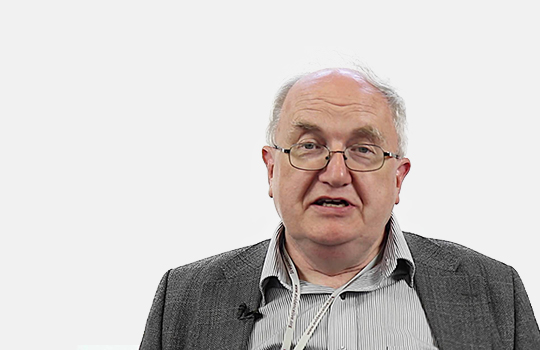Richard Lehman reviews the latest research in the top medical journals
 NEJM 1 Feb 2018 Vol 378
NEJM 1 Feb 2018 Vol 378
Kids’ kidneys and long term trouble
One of the largest long-term cohorts of young people in the world is provided by the Israeli Army. Health reviews before compulsory military service provided medical data on more than 1.5 million conscripts from 1967-97, and these were then compared with a national registry of end-stage renal disease (ESRD). A history of any childhood kidney disease was associated with a hazard ratio for ESRD of 4.19 (95% confidence interval 3.52 to 4.99). A striking finding was that having kidney disease as a kid was often followed by apparent normalisation of kidney function in adolescence, and yet the added risk of ESRD as an adult persisted.
NB: I suppose most people have forgotten that “kids” once referred to the young offspring of goats. I think I ate kid’s kidneys once, charcoal grilled in a basement in Iran, in 1974. Delicious, if slightly goaty.
Ablating AF in heart failure
“Paradigm Shift for Treatment of Atrial Fibrillation in Heart Failure” says the heading of the editorial on this trial. Well, “paradigm shift” = often too good to be true, and so too is a large effect size. Here the key events—all-cause death and hospital admission for heart failure—were nearly halved in the intervention group. So clearly somebody was benefiting from AF ablation therapy within this population, compared with continued medical treatment. Who exactly were these people? Well, they were nearly all men in their early-mid 60s with mildly symptomatic heart failure with a reduced ejection fraction, and half of it was non-ischaemic. They were all people with AF “who did not have a response to antiarrhythmic drugs, had unacceptable side effects, or were unwilling to take these drugs.” The 369 recruited patients were then randomized to receive more of the medical therapy that wasn’t working or that they weren’t likely to take, or catheter ablation treatment. As a condition for entering this Biotronik-sponsored trial, they were all fitted with a Biotronik implantable cardioverter-defibrillator. The rationale for this was to allow monitoring of arrhythmias, and the device was kept activated even if the patient was judged to be at the end of life. So where is the paradigm shift here? Isn’t it obvious to try ablation if patients are finding their AF drugs ineffective or impossible to take? Isn’t that bound to produce better outcomes in this highly selective group of younger patients with HF? The editorial concludes “it seems reasonable to be more aggressive in offering ablation for atrial fibrillation in patients who also have congestive heart failure.” Given that the average heart failure patient with AF in the UK presents at the age of 78 with multiple comorbidities, I would hold on the aggression and wait for more evidence.
JAMA Intern Med Feb 2018
Pharmacist review to reduce readmissions
What is the answer to polypharmacy? Time with the patient. Whose time? Here it was a hospital pharmacist’s. Don’t stop reading here if you don’t work in a hospital, because this study has lessons for everyone, including all those with relatives on multiple drugs. “In a randomized clinical trial of 1467 Danish participants receiving at least 5 medications, a statistically significant reduced rate of readmissions within 30 and 180 days after inclusion was observed in patients randomized to receive an extended pharmacist intervention compared with those who received usual care or a basic pharmacist intervention.” Note that it was the extended intervention which worked: this needed half an hour to find out properly about patients’ understanding of their treatments and when to seek help. Everybody on a list of medications deserves this, whether or not it reduces admissions. It’s a human right to know what things you are given might do to you.
Worth looking for PE in syncope?
In 2016, an Italian study in the NEJM put the prevalence of pulmonary embolism in patients admitted to hospital for syncope at 17%. The authors recommended including D-dimer as part of an assessment pathway for people arriving with syncope. But this figure was out of line with most other studies, and here comes a new one from 1.6 million people arriving in hospital emergency rooms with syncope across four countries. The prevalence of PE at 90 days of follow-up ranged from 0.14% to 0.83% for all patients and from 0.35% to 2.63% for hospitalized patients. “Pulmonary embolism was rarely identified in patients with syncope. Although PE should be considered in every patient, not all patients should undergo evaluation for PE.”
Ann Intern Med 30 Jan 2018 Vol 168
Living kidney donors & the price of altruism
If you want to donate a kidney while still alive, I think you should read this. But you are unlikely to be put off by it. It’s a systematic review of long-term outcomes which shows that all health risks are the same as non-donors, with the exception of end-stage renal disease; or, if you are able get pregnant, pre-eclamptic toxaemia. For these there is a risk increase which seems alarming (8 and 2 respectively) if given in relative terms, but is tiny as an absolute.
Antithyroid drugs in pregnancy
Between 2008 and 2014, nearly 13,000 South Korean women took antithyroid drugs during the first trimester of pregnancy. Theoretically, the figure should have been zero, because the risk of congenital malformations from these drugs has long been known, so women likely to conceive should strenuously avoid them. But out of a cohort of 2 886 970 completed pregnancies, perhaps this figure is as good as real life can get. Data from the national database allow us to quantify the risks associated with methimazole and propylthiouracil. In the UK, only cats can get methimazole, whereas humans using the NHS have to make it themselves by metabolizing carbimazole. Same end result. Again, framing is everything. The relative risk increase for malformations is small: 7.27% compared with 5.94 in unexposed women. But given in absolute terms, it sounds a bit alarming: an extra 17 cases per thousand with methimazole, or 16.5 with propylthiouracil.
The Lancet 3 Feb 2018 Vol 391
Cancer survival: the global picture
Analysis of individual records for 37 513 025 patients diagnosed with one of 18 cancers from 322 population-based registries in 71 countries”
Wow. This is epic epidemiology, which deserves more than a glance and a sigh on a wet weekend afternoon. But for most working clinicians, the level of data overload here is overwhelming. To make real sense of the figures, you need to read through a methodology section which alone stretches across several pages. So I shan’t comment further: you pick the bits that interest you.
Mothers and children in the Islamic world
The expression “Islamic world” in the title of this next big survey arouses puzzlement, at least from me. What if it was “Christendom”? What would it mean? Islamic countries of fabulous wealth and terrible poverty exist side by side. A mother or child in Yemen will scarcely tell the same story as one in Saudi Arabia. And then there are all the Muslim Majority Countries (MMCs) we tend to forget about—Sierra Leone, Chad, Somalia, Gambia, Guinea, Mauritania, Mali, and Niger. Yes, they are all African and poor, and that may be why their figures for maternal and child mortality are so poor. Nothing whatever to do with Islam. I don’t really know why this category made it into a medical journal.
The BMJ 3 Feb 2018 Vol 360
Does being ill give you cancer?
Being ill is bad for your health. In fact, it can give you cancer, if you believe that association equals causation in this instance. The standard medical screening programme in Taiwan health system records eight disease markers: cardiovascular disease markers (blood pressure, total cholesterol, and heart rate), diabetes, chronic kidney disease markers (proteinuria and glomerular filtration rate), pulmonary disease, and a gouty arthritis marker (uric acid). Followed up for 8.7 years, a cohort of 405 878 participants showed that these factors (excluding BP and lung disease) contributed to more than one fifth of the risk for incident cancer and more than one third of the risk for cancer death. They also found that physical activity is associated with a nearly 40% reduction in the cancer risk associated with chronic diseases (so defined).
Migraine and CV risk—again
It’s one thing to have a risk, but another to be able to modify it. For example, I am male. I have male pattern baldness. I also get migraines. I would not expect my cardiovascular risk to go down by having a sex change, a hair implant, or a treatment that reduces my migraines. But wait: I may be wrong. The rather breathless editorial which accompanies this study asks “Could people with migraine experience a similar reduction in cardiovascular risk if the frequency or severity of migraine is reduced? We simply do not know.” Nor indeed do I care. I shall be dead before anyone has tested this improbable hypothesis, especially since the Danish population data show that “Migraine was associated with increased risks of myocardial infarction, ischaemic stroke, haemorrhagic stroke, venous thromboembolism, and atrial fibrillation or atrial flutter. Migraine may be an important risk factor for most cardiovascular diseases.” Bye.
Plant of the Week: Acacia baileyana “Songlines”
The acacia trees of New South Wales can be truly beautiful late winter plants, covered in fragrant yellow pom-poms of flower. The rest of the year they also look good, with unique ferny leaves (properly not leaves but phyllodes) waving elegantly up to 6m high. They are known locally as wattles and more widely as mimosas.
In their native mountains they occasionally experience a light frost or dusting of snow. The reason you don’t see them much in England is that they don’t like sustained cold windy weather. Also, where they do thrive (say against a warm wall), they can easily outgrow their space.
“Songlines” is a form with the additional virtue of lovely purple-grey leaves (or phyllodes if you must). Inevitably it is advertised as hardier than most, by the few places that sell it. Time will tell. Our little fellow, bought last year, has already weathered quite a bit of frost and wind, and looks set to be covered with those wonderfully scented pom-poms in the coming weeks. Provided that these weeks don’t prove fatal.
